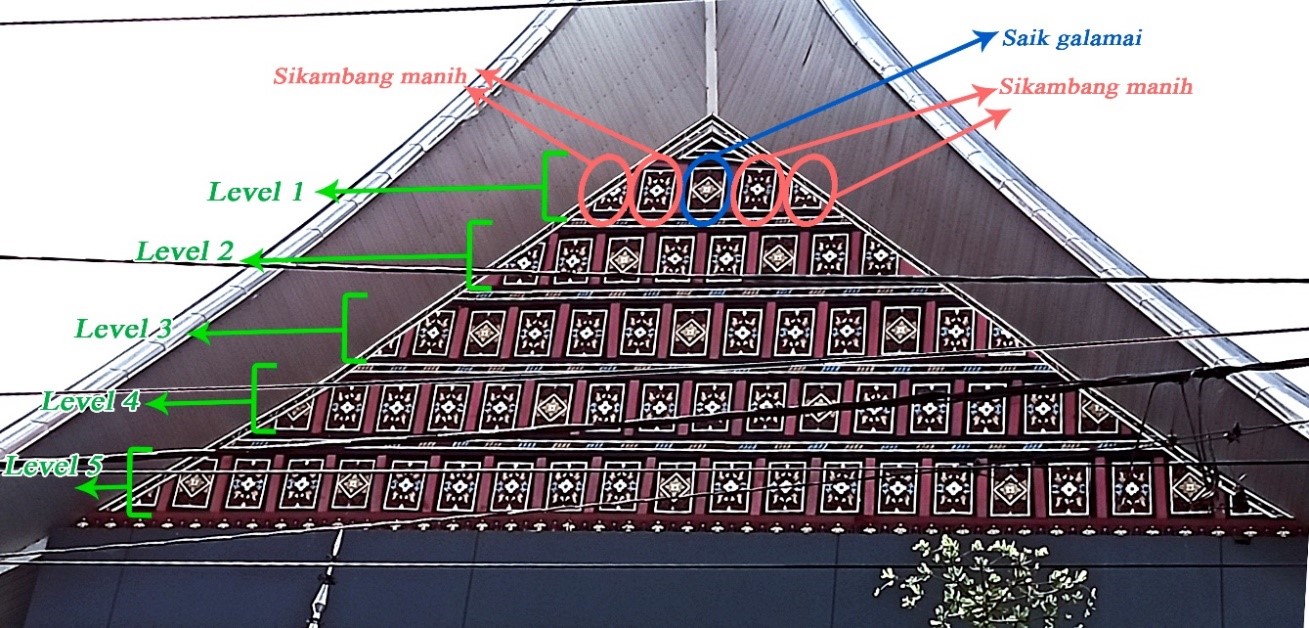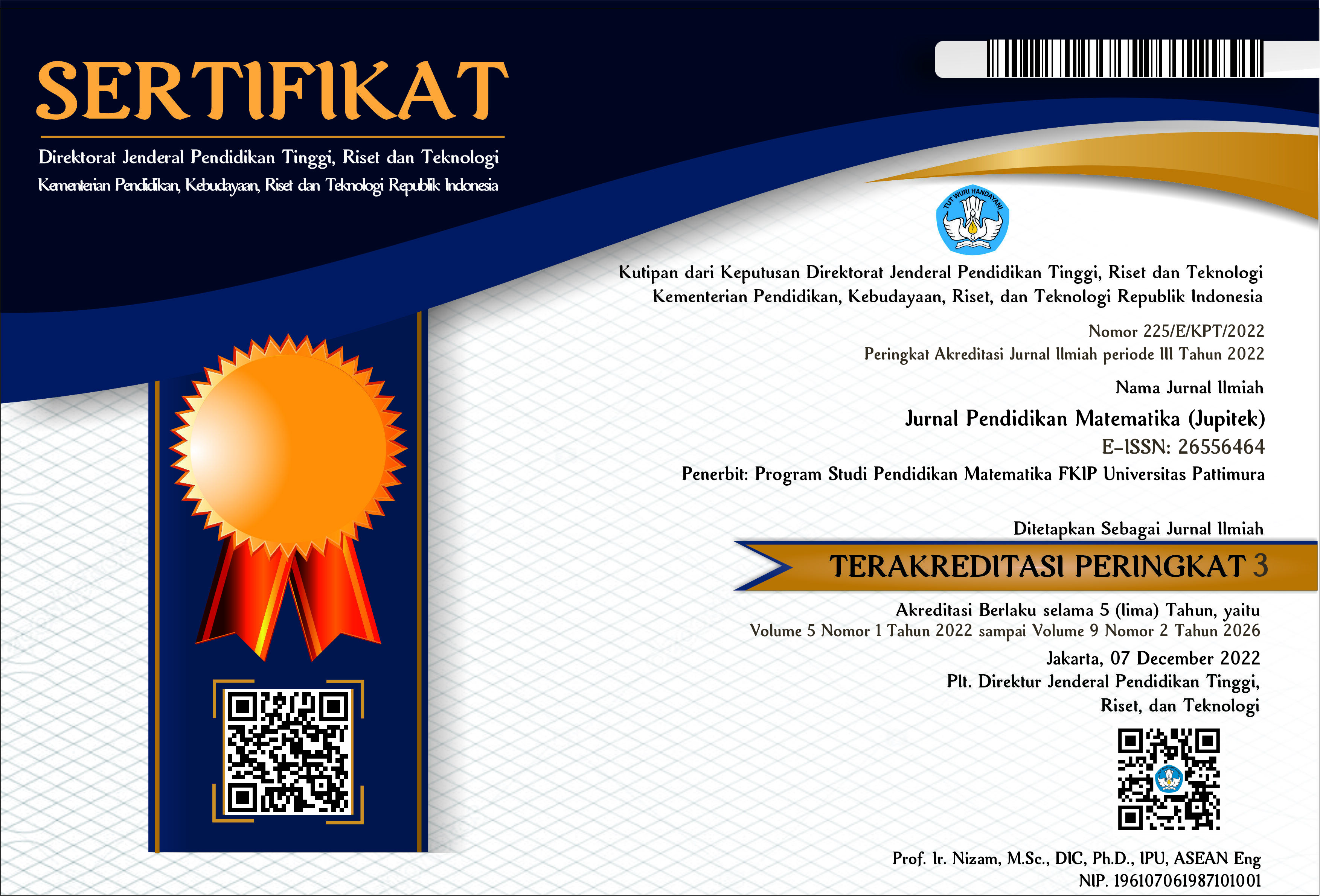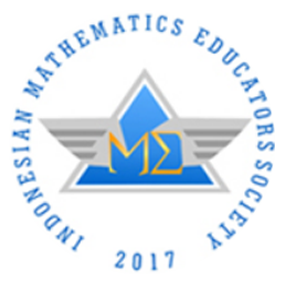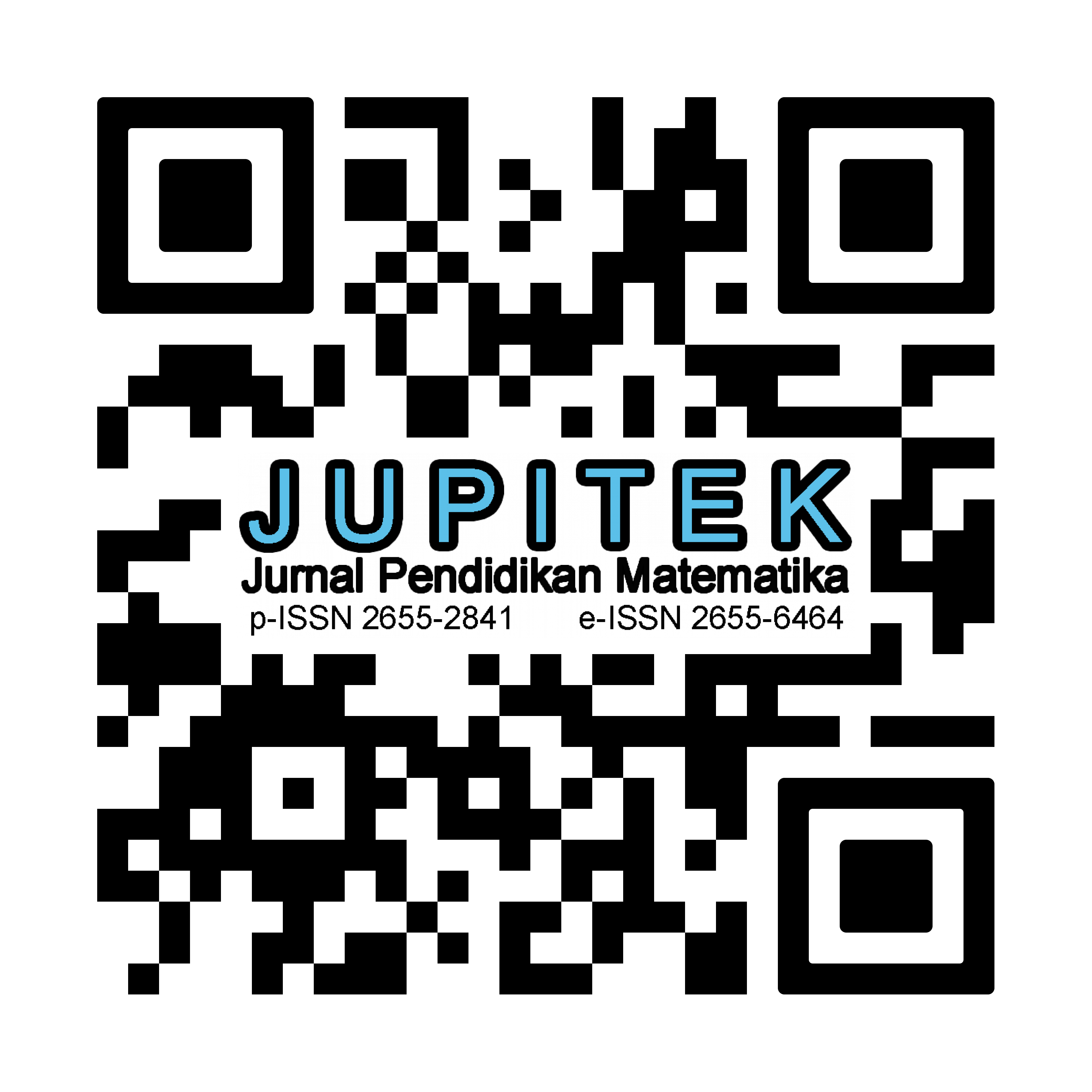ETHNOMATHEMATICS: ARITHMETIC SEQUENCE PATTERNS OF MINANGKABAU CARVING ON SINGOK GONJONG
Abstract
This study aimed to explore the arithmetic sequence pattern found in Minangkabau carvings mounted on singok gonjong. The method used is a qualitative method with an ethnographic approach. Data was collected by observation, interviews, literature studies, and documentation. The object of this study is Minangkabau carving on singok gonjong. The data obtained in this study came fromdirect observation, results of interviews with Minang carving craftsmen, documentation, and literature studies. The results showed three kinds of arithmetic sequence patterns in Minang carvings in singok gonjong. The first is the arithmetic sequence pattern on the saik galamai carving with formula Un = n. The second is the pattern of odd and even arithmetic sequences on the sikambang manih carving wtih the odd formula U(2n+1) = 3n + 1 and the even formula U(2n) = 3n. The last is the pattern of odd and even arithmetic sequences on the combined engraving of saik galamai and sikambang manih wtih the odd formula U(2n+1) = 4n + 1 and the even formula U(2n) = 4n. The conclusion shows that the presence of patterns on the saik galamai carvings and sikambang manih carvings found on Singok Gonjong can be used as a preference for learning arithmetic sequences at school
Downloads
References
Bartle, R. G., & Sherbert, D. R. (2000). Introduction to real analysis (Vol. 2). Wiley New York.
Bird, J. (2020). Arithmetic and geometric progressions (8 ed.). Routledge Publishing. https://doi.org/10.4324/9780080962122-5
Bustan, A. W., Salmin, M., & Talib, T. (2021). Eksplorasi Etnomatematika Terhadap Transformasi Geometri Pada Batik Malefo. Jurnal Pendidikan Matematika (JUPITEK), 4(2), 87–94. https://doi.org/10.30598/jupitekvol4iss2pp87-94
d’Ambrosio, U. (2001). In My Opinion: What Is Ethnomathematics, and How Can It Help Children in Schools? National Council of Teachers of Mathematics (NCTM), 7(6), 308–310. https://doi.org/10.5951/tcm.7.6.0308
Ditasona, C., Turmudi, & Rosjanuardi, R. (2022). Arithmetic Sequence at Gorga. Paideuma Journal, 15(4), 5–9. https://doi.org/10.2991/assehr.k.210615.034
Fauziah, F., & Niniwati, N. (2017). Ethnomathematics Exploration On The Carvings of Rumah Gadang in South Solok Regency of West Sumatera. Journal of Educational Research, 2(11), 134–148. https://www.ijrdo.org/index.php/er/article/view/1738
Fitriza, R. (2018). Ethnomathematics Pada Ornamen Rumah Gadang Minangkabau. Math Educa Journal, 2(2), 181–190. https://doi.org/10.15548/mej.v2i2.187
Gerdes, P. (2001). Ethnomathematics as a new research field, illustrated by studies of mathematical ideas in African history. Science and Cultural Diversity: Filing a gap in the history of sciences. Cuadernos de Quipu, 5, 10–34.
Hasan, H. (2004). Ragam rumah adat Minangkabau: falsafah, pembangunan, dan kegunaan. Yayasan Citra Pendidikan Indonesia.
Isnan, H., & Rohmiyati, Y. (2016). Pelestarian Pengetahuan Seni Ukir Masyarakat Minangkabau. Jurnal Ilmu Perpustakaan, 5(1), 241–250.
Izzati, F., Munaf, Y., & Dharsono, S. K. (2016). Ornamen Pada Masjid Tuanku Pamansiangan Nagari Koto Laweh Kabupaten Tanah Datar Sumatera Barat. Gorga: Jurnal Seni Rupa, 7(2), 101–107. https://doi.org/10.24114/gr.v7i2.10920
Joansa, Y. (2015). Nama, Penempatan, dan Makna Ukiran Tradisional Minangkabau Rumah Gadang Sicamin Kabupaten Agam. The Journal of Art Education, 53(5), 1–17. https://doi.org/10.24036/sr.v4i1.5619
Nurhikmah, S., Febrian, F., & Mirta Fera. (2019). Eksplorasi Etnomatematika Pada Ragam Corak Ukiran Khas Melayu Kepulauan Riau. Jurnal Kiprah, 7(1), 41–48. https://doi.org/10.31629/kiprah.v7i1.1313
Pais, A., & Mesquita, M. (2013). Ethnomathematics in non-formal educational settings: the Urban Boundaries project. Revista Latinoamericana de Etnomatemática, 6(3), 134–144. https://revista.etnomatematica.org/index.php/RevLatEm/article/view/95
Prasetya, L. E., & Adi, S. M. (2016). Makna dan Filosofi Ragam Hias Pada Rumah Tradisional Minangkabau di Nagari Pariangan Tanah Datar. In H. F. Lubis & Y. Sari (Ed.), Prosiding Seminar Nasional “Kearifan Lokal dalam Keberagaman untuk Pembangunan Indonesia“ (pp. 59–70).
Prihatin, P., Prastawa, W., & Nasution, M. W. (2022). Bentuk Ukiran Pada Bangunan Museum PDIKM Kota Padangpanjang. Jurnal Sitakara, 7(1), 39–53. https://doi.org/10.31851/sitakara.v7i1.7466
Putri, M. S., Sundari, S., & Yulimarni, Y. (2021). Ornamen Sebagai Elemen Estetik Pada Istano Basa Pagaruyung. Artchive: Indonesia Journal of Visual Art and Design, 2(1), 55–64. https://doi.org/10.53666/artchive.v2i1.1733
Rahmani-Andebili, M. (2021). Precalculus Practice Problem, Methods, and Solutions. In Precalculus (1 ed.). Springer. https://doi.org/10.1007/978-3-030-65056-8_13
Summerfield, A., Summerfield, J., & Abdullah, T. (1999). Walk in splendor: ceremonial dress and the Minangkabau (1 ed.). University of California.
Suwarsono, S. (2020). Etnomatematika dan Kontekstualisasi Pendidikan Matematika. PT Kanisius.
Syafwandi, S., & Zubaidah, Z. (2018). Makna Filosofi Ornamen Hias Tradisional Minangkabau Masihkah Relefan Dengan Pola Kehidupan Masyarakat Sekarang. Jurnal Seni dan Desain, 12(1), 489–500. https://doi.org/10.24036/ranahseni.v12i01.36
Utami, R. N. F., Hermanto, R., Muhtadi, D., & Sukirwan, S. (2021). Etnomatematika: Eksplorasi Seni Ukir Jepara. JP3M (Jurnal Penelitian Pendidikan dan Pengajaran Matematika), 7(1), 23–28. https://doi.org/10.37058/jp3m.v7i1.2551

Copyright (c) 2022 Muhammad Zia Alghar, Elly Susanti, Marhayati Marhayati

This work is licensed under a Creative Commons Attribution-NonCommercial-ShareAlike 4.0 International License.
License and Copyright Agreement
By submitting a manuscript to Jurnal Pendidikan Matematika (JUPITEK), the author(s) certify and agree to the following terms:
- Originality and Authority: The submitting author is authorized by all co-authors to enter into this agreement. The manuscript describes original work that has not been published previously in a peer-reviewed journal, nor is it under consideration for publication elsewhere.
- Approval: Its publication has been approved by all author(s) and by the responsible authorities of the institutions where the work was carried out.
- Rights: The authors secure the right to reproduce any material that has already been published or copyrighted elsewhere.
- Licensing and Copyright: Authors retain the copyright to their work.
- License Grant: The authors grant Jurnal Pendidikan Matematika (JUPITEK) the right of first publication, with the work simultaneously licensed under the Creative Commons Attribution-NonCommercial-ShareAlike 4.0 International (CC BY-NC-SA 4.0).
- Self-Archiving: Authors are permitted and encouraged to deposit the published version of their article in institutional repositories, on their personal websites, and other academic platforms, with proper acknowledgment of its initial publication in Jurnal Pendidikan Matematika (JUPITEK).





.png)


